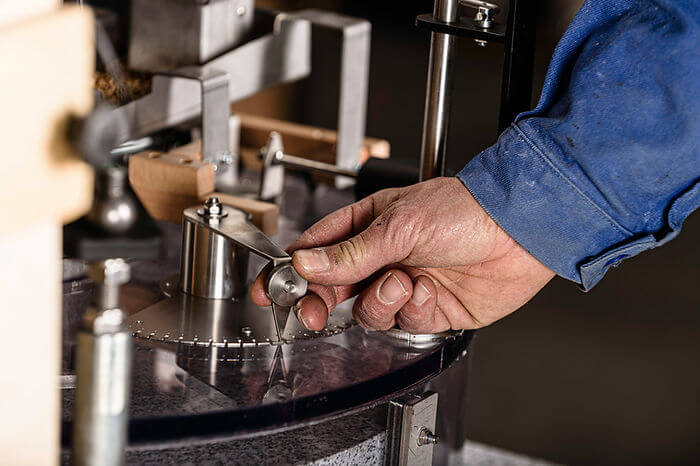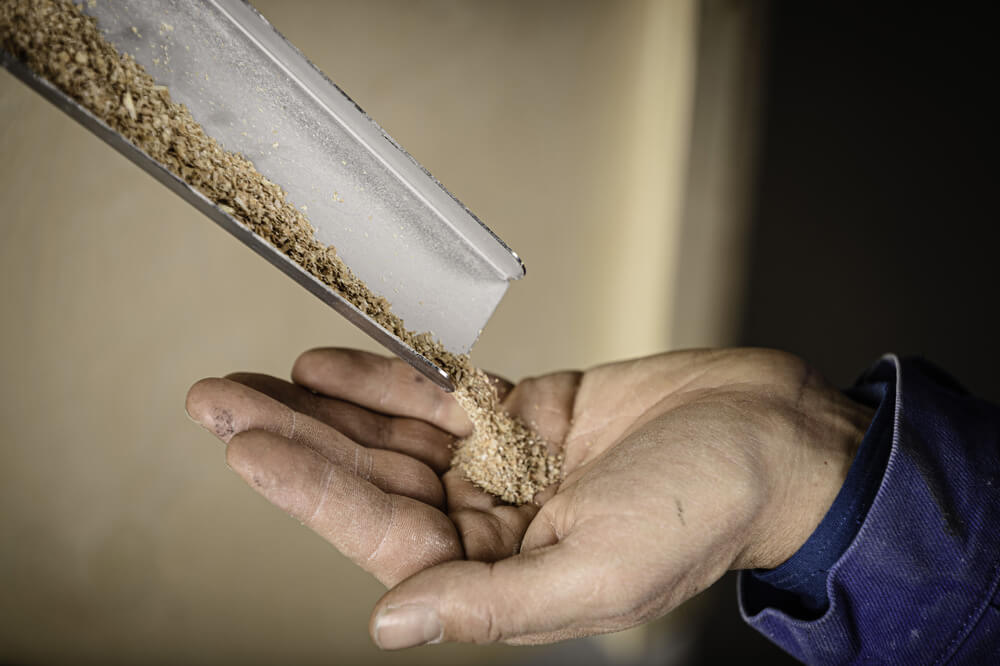What is the ash content of a flour?
To define the fineness of a flour, we usually talk about its ‘ash content’, a measurement originally developed for cylinder milling. It measures the amount of grain husk present in the flour: the higher the ash content (i.e. the more bran it contains), the richer the flour is in minerals.
Although the ash content is of little relevance to Astreïa mills, the use of sieves on your stone mill allows more or less bran to pass through into the flour, and therefore provides equivalents. A wider mesh allowing more bran to pass through will lead to a higher ash content.
Which sieve for which flour?
Depending on the type of cereal or product you want to make with your flour, here’s the sieve our Astreïa teams recommend you use for optimum quality. Of course, your mill’s pre-settings are also crucial to obtaining the flour best suited to your project.
To make wheat flour:
- 800µ mesh sieve for wholemeal flour, type of flour approaching T150
- 600µ sieve for semi-complete flour, type of flour approaching T130
- 470µ mesh sieve for semi-complete flour, type of flour approaching T110
- 300µ mesh sieve for aniseed flour, type of flour approaching T80
- 250µ mesh sieve for white flour, type of flour approaching T65
To make corn flour:
- 800µ mesh sieve, flour + coarse semolina, wholemeal
- 600µ mesh sieve, flour + medium semolina, semi-complete. Coupled with the fine bran sieve (700µ mesh), you obtain 2 differentiated products: ‘fine’ flour in the sifting machine and semolina at the exit of the fine bran sieve.
- 470µ mesh sieve, fine flour (represents 30 to 40% of the grain). Can be combined with the fine bran sieve as above.
To make buckwheat flour:
- 1000µ mesh sieve for making ‘buckwheat’ galettes, yield around 80%.
- 300µ mesh sieve, slightly dark flour, yield around 60%.
NB: The buckwheat is passed through the mill, unhulled, with its hull removed during sieving.
To make rye, small spelt and large spelt flours:
- 800µ mesh sieve for wholemeal flour, type of flour approaching T150
- 600µ mesh sieve for semi-complete flour, type of flour approaching T130
To make durum wheat semolina:
- 800µ mesh sieve for complete coarse semolina
- 600µ mesh sieve for medium semi-complete semolina. You can also combine it with the fine bran sieve to obtain 2 different products: ‘fine’ flour in the sifting machine and semolina from the fine bran sieve.
To make dough:
- 470µ mesh sieve for semi-complete pasta
- 300µ mesh sieve, for more yellow pasta, with prior brushing
For the pizza dough:
To make pizza dough, suggest a flour equivalent to T80, your pizza-maker will work the dough with a longer fermentation time.
Astreïa stone mills: 1 mill, several flours!
All our Astreïa flour mills are available with a 300µ sieve for the production of bise flour (equivalent to an ash content of 80). However, if your needs vary or if you wish to produce other types of flour (for the production of semi-complete pasta or spelt flour, for example), you can also fit one or more additional sieves.
Changing the sieves on our Astreïa mills is easy and requires very little handling. With just one mill, you can grind a wide range of flours and offer a variety of products.
Astreïa offers 6 different sieve mesh sizes:
- 1200µ
- 1000µ
- 800µ > T150 equivalent
- 600µ > T130 equivalent
- 470µ > T110 equivalent
- 300µ > T80 equivalent. This sieve is automatically supplied with your Astreïa mill.
- 250µ > T65 equivalent
To avoid impacting your yield too much, the 250µ mesh sieve (T65) is the smallest sieve possible with Astreïa mills. Yield is reduced by 5 to 15% with a 250µ mesh sieve, depending on your wheat variety.
To produce nutritious, tasty flour, it’s essential to choose a quality cereal that has been worked in living soil, not forgetting the cereal preparation stages (prior to milling) which will help to improve the final quality of your flour. A cereal that has been brushed and dehulled beforehand (for the varieties that require it) will ensure that you work with a grain that is of better quality and free from impurities. The Astreïa brush and huller can be installed in a stand-alone line with your mill to boost productivity.




